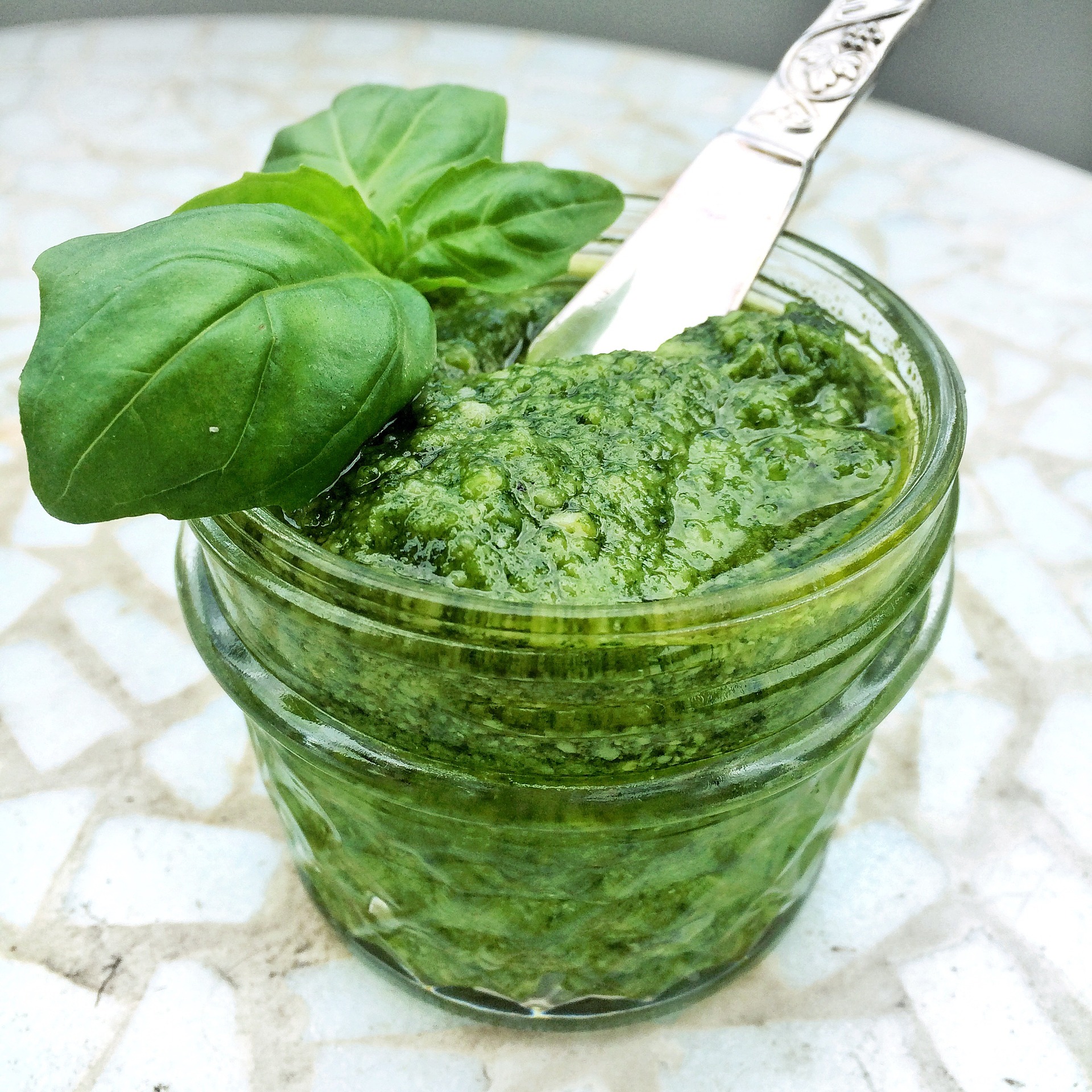[cooked-sharing]

Tips Section
The key to making creamy pesto is to add the ingredients to the food processor in the right order to ensure that the nuts break down to a fine paste before the greens have a chance to turn brown. Use basic basil pesto as a pasta sauce, or thin it out with a little olive oil to drizzle it over steak, chicken, fish, pizza or tomato salad.
To make mint-pistachio pesto, substitute mint for the basil and pistachios for the pine nuts. Substitute 2 tablespoons pecorino cheese for the parmigiano reggiano and add 1 teaspoon finely grated lemon zest. Use to garnish spring vegetables, fish and shellfish.
Ingredients
Directions
Pulse toasted pine nuts in a food processor until they're completely broken down. Stop to scrape down the sides of the bowl with a spatula from time to time.
Add olive oil and garlic and pulse until garlic is finely chopped.
Chop basil very roughly — just run a knife through it once or twice to cut most of the leaves into halves or thirds — then add to food processor and pulse, stopping every 15 seconds to push the leaves down with a rubber spatula, until basil is entirely worked into the oil.
Pulse for another few seconds, and then stop to prevent turning the basil brown.
Pour pesto base into a bowl and add grated cheese and salt.
Stir to combine, then taste and adjust seasoning as needed.
Leave the sauce thick to toss with cooked pasta and a little pasta cooking water.
To use the pesto as a garnish for grilled or roasted meats, fish and vegetables, thin it out with 2 to 3 more tablespoons olive oil until it’s the consistency of a loose paste.
To store leftovers, pour a little more olive oil over the pesto to cover.
Refrigerate in an airtight container for up to three days.
Ingredients
Directions
Pulse toasted pine nuts in a food processor until they're completely broken down. Stop to scrape down the sides of the bowl with a spatula from time to time.
Add olive oil and garlic and pulse until garlic is finely chopped.
Chop basil very roughly — just run a knife through it once or twice to cut most of the leaves into halves or thirds — then add to food processor and pulse, stopping every 15 seconds to push the leaves down with a rubber spatula, until basil is entirely worked into the oil.
Pulse for another few seconds, and then stop to prevent turning the basil brown.
Pour pesto base into a bowl and add grated cheese and salt.
Stir to combine, then taste and adjust seasoning as needed.
Leave the sauce thick to toss with cooked pasta and a little pasta cooking water.
To use the pesto as a garnish for grilled or roasted meats, fish and vegetables, thin it out with 2 to 3 more tablespoons olive oil until it’s the consistency of a loose paste.
To store leftovers, pour a little more olive oil over the pesto to cover.
Refrigerate in an airtight container for up to three days.